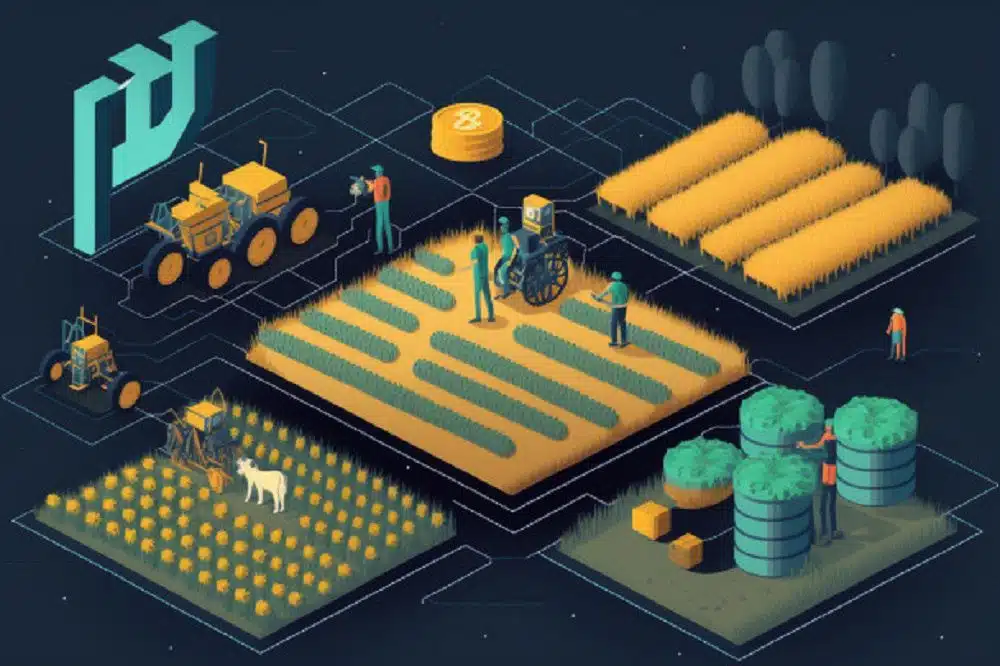New methods of making money appear with each new development. The same is true of the recent explosion of the cryptocurrency market. People have quickly made much money in various fields, from day trading to mining. However, other kinds of crypto investment, such as yield farming and staking, are gaining popularity among consumers. And how do they vary from one another?
Definition of Yield Farming in crypto
One common strategy for earning crypto tokens in the background is “Yield Farming.” In this scenario, you would store your cryptocurrency on a platform that would lend it to market makers and liquidity providers. Interest and a cut of the transaction fees may accrue to you this way.
Explaining the procedure of Yield Farming
In most cases, Automated Market Makers (AMMs) facilitate trade on decentralized exchanges. These apps replace the traditional “counterparty” in trading with a pool of monies. DEXs use liquidity pools to ensure there are always enough tokens for transactions to go off without a hitch.
“Yield farming” refers to putting your cryptocurrency into liquidity pools by lending it to DeFi lending sites. In exchange, you’ll get interested in your cryptocurrency investments.
Potential Harm and Gain
Yield farming is great for making money with your spare crypto dollars. If you jump in at the beginning of the project life cycle, the payoffs can be substantial.
However, the price volatility of cryptocurrencies is a significant issue that must be considered while yield farming. Because of this volatility, you risk experiencing short-term losses in your money, which will become permanent if you remove them.
Staking
Staking: A Cryptocurrency Definition
To validate blocks on a blockchain, users can participate in a consensus procedure called “staking.” Your “stake” in the network is the cryptocurrency you have locked in on the platform. With this stake, you may check whether financial dealings are legitimate. If your validation is successful, you will get “block rewards” in the cryptocurrency system.
How does Staking Work?
Transactions on centralized platforms are authenticated using the platform’s internal processes. Since there is no central authority on a blockchain, this cannot happen. Instead, participation from the platform’s users is required to ensure the network’s safety.
Staking accomplishes this in proof-of-stake blockchains. Validation participation requires staking, which functions as the collateral. You may be rewarded if you verify a group of transactions and add them to the blockchain. However, you will lose some of your investment if you engage in harmful behavior or approve fraudulent transactions.
Potential Harm and Gain
You may make money and help a network you already use by staking. Supporting a platform by staking also ensures its future because stakers are essential to a blockchain’s smooth functioning and durability.
Staking primarily faces three threats: network downtime, validator risks, and failed projects. If the network could be better, so may your earnings. Your staked value may decrease if you select the wrong validator node to stake with. Finally, before spending money on a project, be sure you’ve done your homework.
Differences Between Yield Farming and Staking
In yield farming, you may borrow or lease almost anything valuable. One convenient way to centralize this procedure is to use a service like Aave or Compound.
However, the network’s native cryptocurrency is required for staking. For instance, the BNB coin is needed for staking on the BNB bright chain. Ethereum and Bitcoin cannot be used interchangeably.
Income Prospects
Only some people may be willing to lend you their tokens at the beginning of a crypto enterprise. Some cryptocurrencies promise returns of over 70% annually, making it worthwhile to be an early investor.
With staking, your earnings are less tied to market fluctuations and more to the token’s value and the number of rewards earned every block. Investment returns are significantly smaller, with some blockchains providing only 10 percent each year.
Demand and Difficulty
Farming with a high yield is a challenging task. To do so successfully, you need knowledge of the overall DeFi lending market and the projected returns on any specific asset. Swapping between several tokens to get the one with the best yield is a possible strategy for optimal farming.
It’s easy to stake. You need to decide the platform you want to protect. The next step is to select a validator and stake the necessary token amount to begin earning. It isn’t straightforward if you want to host your validator node, which is well out of most investors’ price range.
Types of Danger
As was previously indicated, the more significant potential for rewards in yield farming also means more risk. Yield farming is more vulnerable to price fluctuations and coin failures than staking.
Acceptability to Various Investors
If you are an experienced crypto investor familiar with DeFi lending methods, consider yield farming as an investment strategy. Instead, staking is a better option if you are a novice investor or choose a low-risk investment strategy.
Which is Better in Long and Short Term?
There are benefits to making any investment. Every time a block is verified, a staker can begin earning rewards. A block reward is dispersed on systems like Ethereum every 12 seconds. Consistent but little profit is what you can expect from this.
Tokens need not be locked to engage in yield farming. Farming is a highly liquid investing strategy that lets you move your money between several exchanges for the most significant potential profits.
Since yield farming permits high-interest reinvestment and platform-hopping, it may be the superior long-term investment. The potential long-term rewards, however, are substantially more significant due to this, as is the associated risk.
Conclusion
Is increasing crop yields preferable to staking? Improved results for cryptocurrency investors may be attributed to yield farming and staking. In particular, yield farming is a lucrative choice, but only if you’re willing to take on the hazards that come with it. Conversely, staking generates a revenue stream with minimal loss potential. The final decision should be based on your investment expertise and personal preferences.


